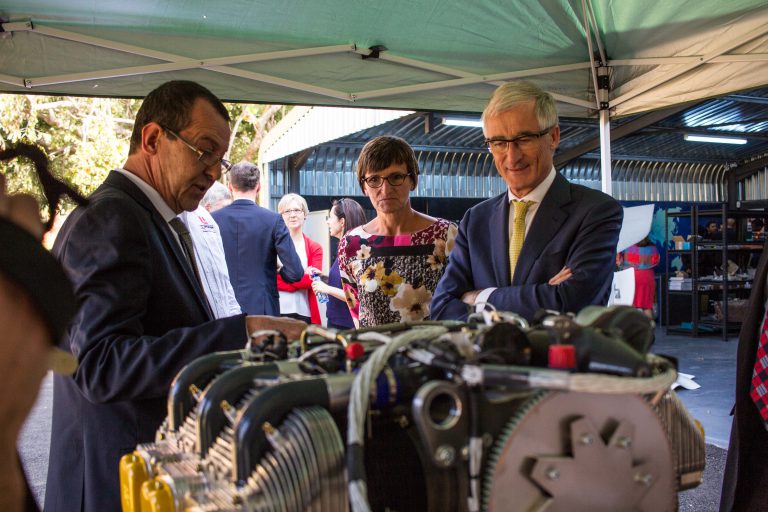05/06/2018 The Future of Flight: South Africa A small university in Pretoria has become the first to develop this technology, long before the MiTs and Tesla’s of the world. “Never underestimate the creativity and potential of a young mind,” Jan Rombouts, the Chairman of Belgium Campus, tells us early one autumn morning as we sit in an airplane hangar, built for an innovative group of technology students. Located on the outskirts of Pretoria, the Technology University is a far cry from sheer scale of the headquarters or innovation hub for Tesla or even Blue Origin. And yet, it is here, in a small South African suburb, that the future of aviation is emerging. Bright Young Minds When you meet the Chairman and his young team of whizz kids, top of mind is a question of why an IT University is building an aircraft. “IT has become a part of everything,” Rombouts begins, tinkering with some cables on the aircraft’s wing. “The world runs on innovative ideas and ICT is the platform that endorses the manifestation of these ideas. Information Technology is, after all, an enabler.” True, one of the greatest credos of this age of technology has to be the dexterity with which IT adapts to other disciplines. And here, in this remarkable hanger-come-workshop, does it become ever apparent. The Chairman and project lead, goes on to explain how the students at Belgium Campus have been fortunate enough to work with top universities and companies across the globe, from the United States to Australia. From developing facial recognition technology for drones to innovation projects with Boeing and Lockheed Martin. “As an aviator myself, and someone who thrives on innovation, we sat together as a team when we had come back from a recent project with Boeing and seriously began to consider the possibility of building our very own plane, and here we are today.” The Environment to Flourish Walking through the hanger, the team of students points out the other innovations currently underway and how no expense has been spared to ensure they have everything they need to explore their ideas and visions; illustrating the university’s passion for the ICT sector and the kinetic power and influence at its command. The management and academic team believe that through empowering their students to innovate and revolutionise their worlds, many more astonishing solutions flow through the campus that will greatly benefit every type of industry and sector. One such undertaking is their Aeronautics Project where students are given access to the field of Aeronautics and have a full-scale airport hangar at their disposal. “They’ve explored everything from missile-lock technology on fighter jets to seatbelt light activations on Boeing 737s,” Rombouts proudly states. “I’ve been at Belgium Campus for almost twenty years now and we all truly believe that bright minds thrive best when offered the space in which to create. That’s why we’ve constructed physical innovation spaces called ‘Learning Factories’. Here, our students are given the space and tools to take their ideas from prototype to marketplace, and this is a key focus for us in 2018.” Innovation is a Driver. The South African general aviation market is extremely small compared to the world leaders like United States and of course, China, who are currently the world’s fastest growing in this segment. That being said, the Aeronautics Project focuses on airspace as a platform for commercial and social innovation. “The aircraft we are building is purely experimental, as general aviation regulations prohibit modifications to certified aircraft. Within two years, the aircraft will take off and land on its own, but due to its size, legislation in South Africa insists a pilot needs to be inside the cockpit,” he explains. He continues that one of the biggest hurdles to innovation in this sector are regulations. “In truth, there are some technological hurdles to overcome before this vision of next-generation aviation comes to realisation, but regulations and extremely expensive certification processes can set innovation and reform back years, especially for start-ups and SMEs.” The aircraft is a thing of beauty and something to marvel. The team take me through each component, explaining the improvements they have developed, and of course, the impressive list of innovations any future technologist would be proud to have developed. The fuselage, they explain, was imported from the United States, due mainly to its aerodynamic shape for speed and safety. “Canard Pusher aircraft have an inherent safety advantage since they are insusceptible to loss of control from stalls and spins,” I am told. “And this plane we are building will push small aircraft speed limits beyond the conventional 120km/h to 400km/h, so performance and safety need to go hand in hand.” Months of research was dedicated to aircraft engine performance and a Belgian engine was flown in to meet their requirements. The prop originates from New Zealand, while the glass cockpit is a proudly South African component designed and manufactured in Stellenbosch by MGL Avionics. They explain that they chose MGL’s cockpit particularly, because it is an open-source system which gives them the freedom to develop further on what is existing. Old Technology, Aging Planes, High Mortality Rates Rombouts, an aviator himself with 40 years of aviation experience, points to the dire need for innovation in general aviation, namely fuel efficiency and safety above all else. “In an age of technology and advancement, it is troubling to accept that most of the hobbyist and sport aircraft are basically unchanged from the models first introduced in the early fifties.” There, in the heart of the Belgium Campus Learning Factory, students are now focusing on making private flight safer by addressing one of the biggest categories of accidents: loss of control. Compared to commercial planes, private aircraft lack safety features and redundancies, including co-pilots, backup systems for navigation information and extra engines. “A lot of people think innovation is creating something new,” he shares. “When oftentimes, innovation is









